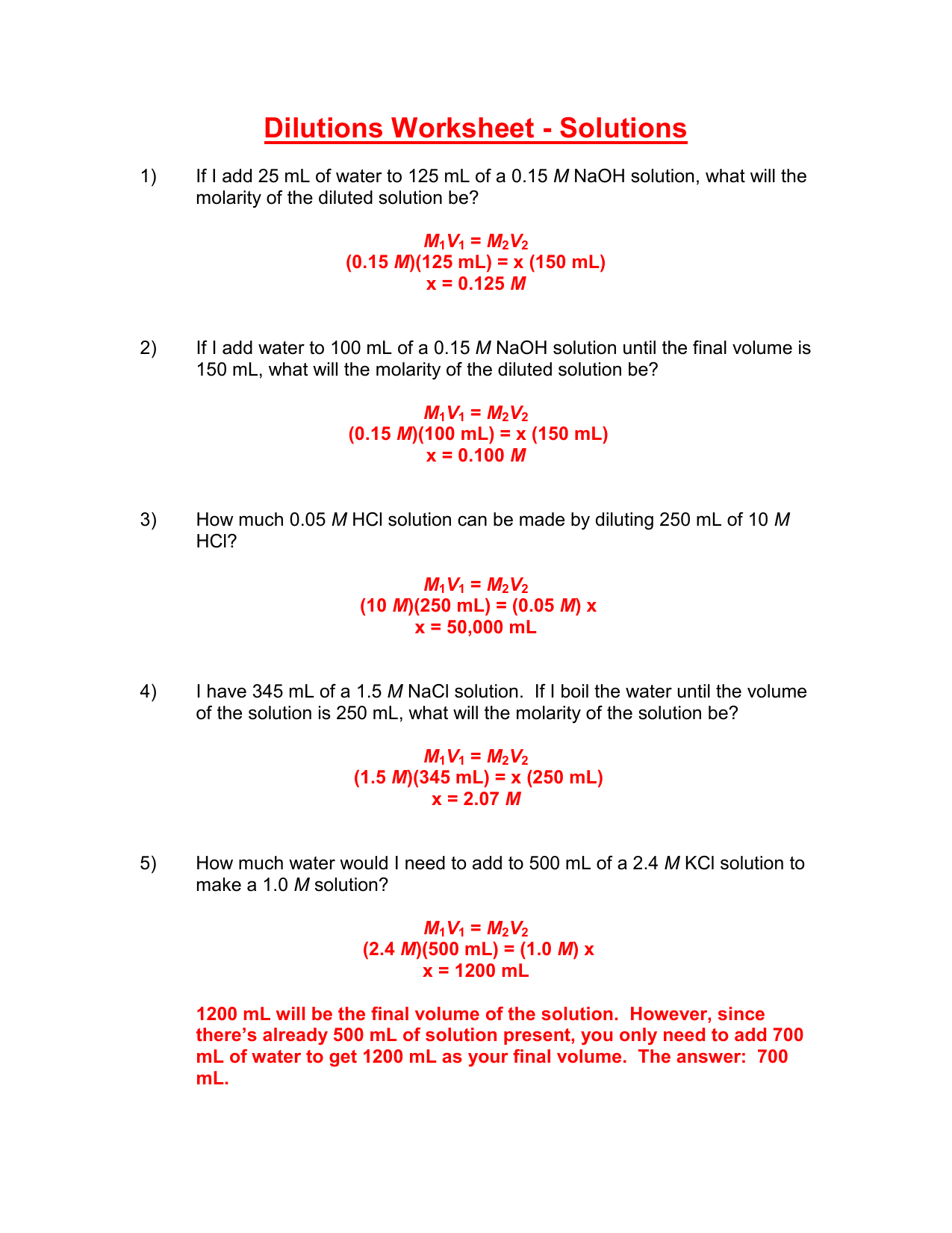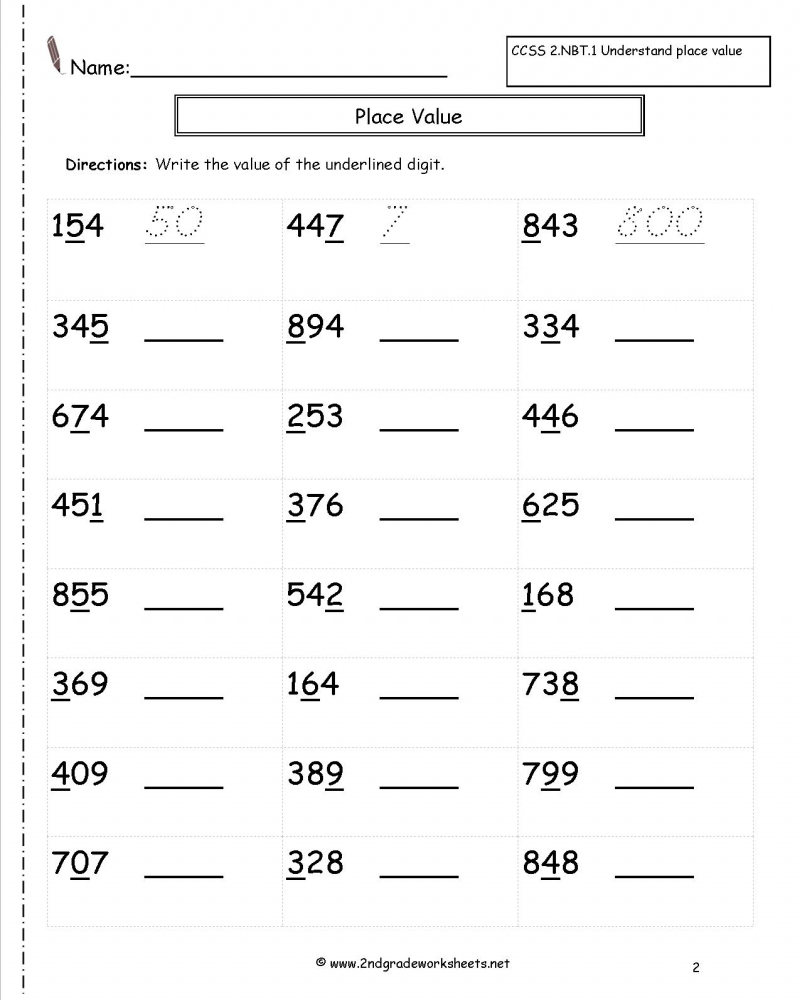5 Proven Dilutions Worksheet Answers for Easy Learning

In the pursuit of enhancing learning in science and mathematics, worksheets have proven to be essential tools for both educators and students. Among the myriad of worksheets available, dilution worksheets stand out as a critical resource in chemistry and biology classrooms. Dilutions play a fundamental role in these subjects, enabling students to grasp concepts of concentration, volume, and proportion, which are pivotal in conducting experiments and understanding chemical reactions. This comprehensive guide delves into five proven dilution worksheet answers that simplify learning these crucial concepts.
Understanding the Basics of Dilution

Before diving into the specific worksheet answers, it's beneficial to understand the basics of dilution:
- Concentration (C1): The initial concentration of a solution.
- Volume (V1): The initial volume of the solution.
- Final Concentration (C2): The concentration after dilution.
- Final Volume (V2): The total volume after adding the solvent.
The core formula for dilution, C1V1 = C2V2, helps to solve for any of these variables when the others are known.
Proven Dilution Worksheet Answers

1. Simple Dilution Calculations

A common worksheet question might look like this: You have 100 mL of a 2.0 M solution of NaCl. If you dilute this to a final volume of 500 mL, what will be the new concentration?
- C1 = 2.0 M
- V1 = 100 mL
- V2 = 500 mL
Using the dilution formula:
| Step | Calculation | Result |
|---|---|---|
| Set up equation | C1V1 = C2V2 | (2.0)(100) = C2(500) |
| Solve for C2 | C2 = (2.0 x 100) / 500 | 0.4 M |

The final concentration after dilution is 0.4 M.
2. Multiple Dilutions

Sometimes, you’re asked to perform several dilutions in a sequence. Here’s how to approach this:
Example: You start with 50 mL of a 1.5 M solution of glucose. You first dilute it to 150 mL, then take 75 mL of this new solution and dilute it to 200 mL. What is the final concentration?
- First dilution (1.5 M → 150 mL): 0.5 M
- Second dilution (0.5 M, 75 mL → 200 mL):
| Step | Calculation | Result |
|---|---|---|
| Set up equation | (0.5)(75) = C3(200) | C3 = 0.1875 M |
The final concentration after the second dilution is 0.1875 M.
3. Serial Dilution

Serial dilutions involve making a dilution series. Each subsequent dilution is made from the previous one. Here’s how to solve for serial dilution problems:
Example: You have a 5.0 M stock solution of HNO3, and you need to prepare a series of solutions with concentrations of 5.0 M, 2.5 M, 1.25 M, and 0.625 M using 5 mL of each previous solution for the next dilution:
- 1st Dilution: V1 = 5 mL, V2 = 10 mL
- 2nd Dilution: V1 = 5 mL, V2 = 10 mL (from the 2.5 M solution)
- 3rd Dilution: V1 = 5 mL, V2 = 10 mL (from the 1.25 M solution)
Using the formula:
| Step | Concentration Calculation |
|---|---|
| First dilution | (5.0)(5) = C2(10); C2 = 2.5 M |
| Second dilution | (2.5)(5) = C3(10); C3 = 1.25 M |
| Third dilution | (1.25)(5) = C4(10); C4 = 0.625 M |
Thus, the concentrations after each serial dilution are 5.0 M, 2.5 M, 1.25 M, and 0.625 M respectively.
4. Dilution of Concentrated Solutions

Understanding how to dilute a concentrated solution to obtain a specific concentration is a frequent challenge:
Example: You need to prepare 150 mL of a 0.15 M solution from a 1.0 M stock solution. How much of the 1.0 M solution do you need?
- C1 = 1.0 M
- C2 = 0.15 M
- V2 = 150 mL
| Step | Calculation | |
|---|---|---|
| Set up equation | 1.0 x V1 = 0.15 x 150 | |
| Solve for V1 | V1 = (0.15 x 150) / 1.0 | 22.5 mL |
You need to take 22.5 mL of the 1.0 M stock solution and dilute it to 150 mL with water.
5. Molarity to Volume Calculations

Another common dilution question involves converting between molarity and volume:
Example: To prepare 250 mL of a 0.2 M solution of NaOH from a 1 M solution, how much of the concentrated solution should be used?
- C1 = 1 M
- V2 = 250 mL
- C2 = 0.2 M
| Step | Calculation | |
|---|---|---|
| Set up equation | C1V1 = C2V2 | 1 x V1 = 0.2 x 250 |
| Solve for V1 | V1 = (0.2 x 250) / 1 | 50 mL |
Use 50 mL of the 1 M NaOH solution and add water to make up the final volume of 250 mL.
🔍 Note: When solving dilution problems, accuracy in measurements is vital to ensure the final concentration is as intended. Always double-check your calculations.
By exploring these five proven dilution worksheet answers, students can better comprehend the principles behind dilution, gaining practical skills in manipulating solutions for various experimental and educational purposes. This foundational knowledge not only aids in classroom learning but also prepares students for real-world applications in science and industry.
The essence of dilution, whether through simple calculations, multiple dilutions, serial dilutions, or complex scenarios involving concentrated solutions, lies in mastering the basic formula and understanding how to apply it effectively. These worksheet answers serve as stepping stones to higher learning and application in sciences, where dilutions are an integral part of lab work and research.
Why is dilution important in experiments?

+
Dilution is crucial in experiments to adjust the concentration of solutions for accurate measurements, minimize chemical interactions, and ensure safety. It also allows for the precise study of reactions at lower concentrations, which can be necessary for observing specific behaviors or reactions in a controlled manner.
Can dilutions affect the accuracy of an experiment?

+
Yes, improper dilutions can significantly affect experimental results. Errors in dilution can lead to inaccurate concentrations, which can skew data or cause reactions to occur differently than expected. Precision in measuring and calculating is key to maintaining the experiment’s validity.
What is the difference between a simple and a serial dilution?

+
A simple dilution involves reducing the concentration of a solution by adding a solvent. A serial dilution is a sequence of dilutions where the diluted solution from one step is used to make the next dilution. Serial dilutions are often used to create a range of concentrations for study or calibration.
How do I choose the right dilution factor?

+
The dilution factor depends on the desired final concentration and the available concentration of the stock solution. It’s calculated based on the dilution equation and the experimental requirements, considering factors like the sensitivity of the analysis, the amount of solution needed, and the equipment available.
What should I do if I make a mistake during dilution?

+
If a dilution mistake is made, reassess the calculations, and if necessary, prepare a new dilution. Small errors might be corrected by adjusting subsequent dilutions, but larger errors usually require starting over. Always document errors and corrections for scientific record-keeping.



